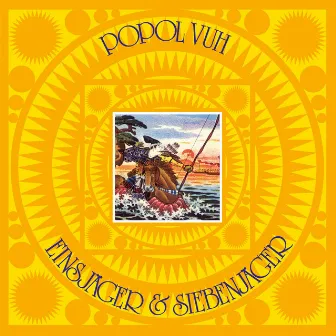Performance
Monthly Listeners
Current
Followers
Current
Streams
Current
Tracks
Current
Global Rank
Current
Listeners 49,040
Top Releases
View AllBiography
Of the many legendary artists to emerge from the Krautrock movement, few anticipated the rise of modern electronic music with the same prescience as Popol Vuh -- they were the first German band to employ a Moog synthesizer and their work not only anticipated the emergence of ambient, but also proved pioneering in its absorption of worldbeat textures. At much the same time Popol Vuh was formed in Munich in 1969, another group of Norwegian descent adopted the same name, an endless source of confusion in the years to follow; both were inspired by the holy book of Guatemala's Quiche Indians, and according to Mayan researchers, the title roughly translates as "meeting place." Keyboardist Florian Fricke was deeply immersed in Mayan mythology at the time he formed the group with synth player Frank Fiedler and percussionist Holger Trulzsch, and his interests were reflected in the spiritual themes of their 1970 debut, Affenstunde. The follow-up two years later, In den Garten Pharaos, was Popol Vuh's creative breakthrough, an intensely meditative work fusing ambient textures with organic percussion. In its wake, however, Fricke converted to Christianity, a move which sparked a rejection of electronics in favor of traditional ethnic instrumentation including guitars, oboe, and tamboura. He tapped Korean soprano Djong Yun to lend vocals to 1972's lovely Hosianna Mantra, and for the next Popol Vuh LP, Seligpreisung, Fricke teamed with one-time Amon Düül II drummer Daniel Fichelscher. Fichelscher and Yun both contributed to its follow-up, 1975's Einsjäger & Siebenjäger, which is widely considered among the group's most stunning efforts. That same year, the band began a lengthy creative partnership with the celebrated filmmaker Werner Herzog which yielded soundtracks for features including Aguirre: The Wrath of God, Fitzcarraldo, and Nosferatu. Throughout the latter half of the '70s, Popol Vuh's fascination with global sounds and instruments continued. The prominence of sitars, tablas, and tamboura percussion on 1977's Herz aus Glas and 1979's Die Nacht der Seele: Tantric Songs earned latter-day sound descriptions like raga rock. In 1978, Fricke founded the Working Group for Creative Singing and also became a member of the Breathing Therapy Society, traveling the world to lecture on both subjects. Ultimately, his outside passions began to overshadow his work in Popol Vuh, and as the '80s dawned, the group recorded more sporadically after 1983's excellent Agape Agape. Fricke continued to reassemble the group, resulting in 1985's Spirit of Peace, the 1987 soundtrack to Herzog's Cobra Verde, and '90s works such as For You and Me and City Raga (the latter sounding surprisingly similar to contemporary electronic and new age). Popol Vuh wound down with a pair of late-'90s LPs, the 1997 album Shepherd's Symphony and its 1999 follow-up, Messa di Orfeo, recorded a year prior during an installation in Bari, Italy. ~ Jason Ankeny, Rovi













